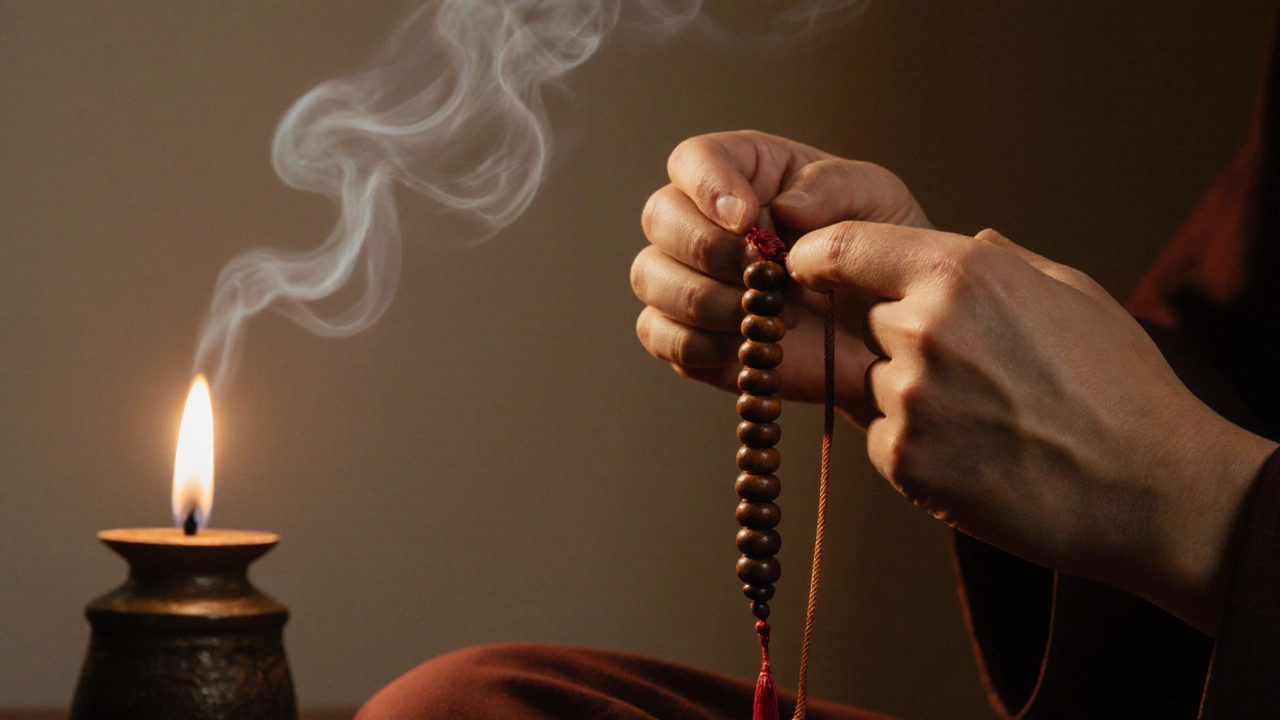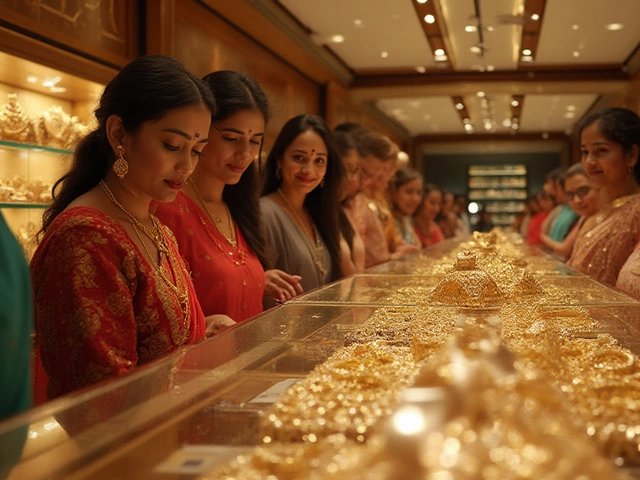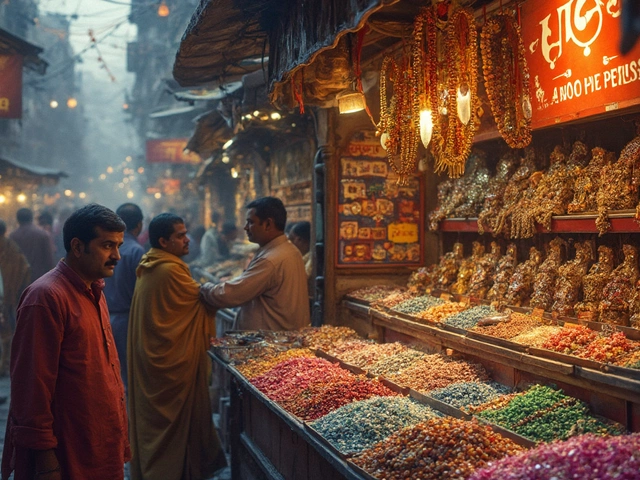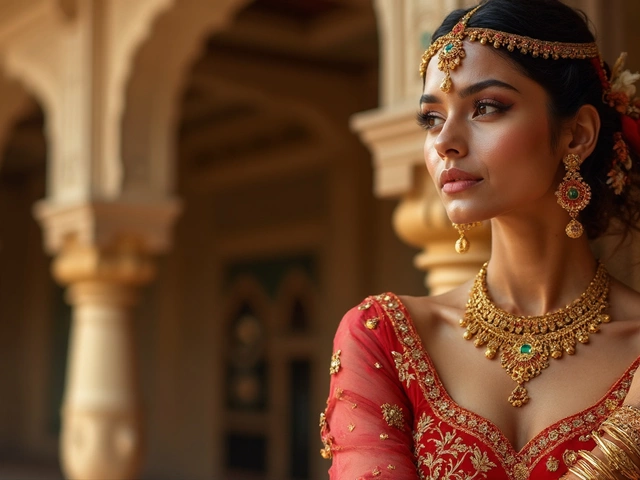Bead Count Luck Calculator
Luck Assessment:
Ever wonder why some people swear by a 108‑bead necklace while others insist on 7 beads for a bracelet? The number of beads you wear can be more than a style choice - it can carry cultural weight, spiritual energy, and even a dash of superstition. In this guide we’ll break down what makes a bead count “lucky”, explore the numbers that matter in India and beyond, and give you a step‑by‑step way to pick the right count for any piece of jewelry.
Quick Takeaways
- In Indian tradition, 7, 9, 11, 21, 33, 51 and 108 are the most commonly regarded lucky bead counts.
- China favors multiples of 8; the West often chooses 3 or 5 for symbolic balance.
- Matching the count to the purpose - prayer, protection, or fashion - maximises the positive vibe.
- Avoid numbers linked to negative myths (e.g., 13 in many cultures) unless you’re deliberately breaking the rule.
- Use the checklist at the end to confirm you’ve covered material, size, and symbolism before buying or making your piece.
What Makes a Bead Count "Lucky"?
At its core, a "lucky" bead count is a number that carries meaning in a cultural or spiritual system. Numbers can represent deities, cosmic cycles, or simply an energetic rhythm that feels harmonious when repeated. When a count aligns with these meanings, believers say it amplifies the intended effect - whether that’s inviting prosperity, calming the mind, or warding off ill‑fortune.
For example, the Hindu concept of 108 is a sacred number that represents the universe's totality - 108 beads mirror the 108 energy lines (nadis) believed to intersect the heart. Repeating a mantra 108 times on a mala is thought to create a complete energetic cycle.
When you choose a count, ask yourself:
- What tradition or belief am I tapping into?
- Does the number have a specific story or myth attached?
- Is the count practical for the jewelry type I want?
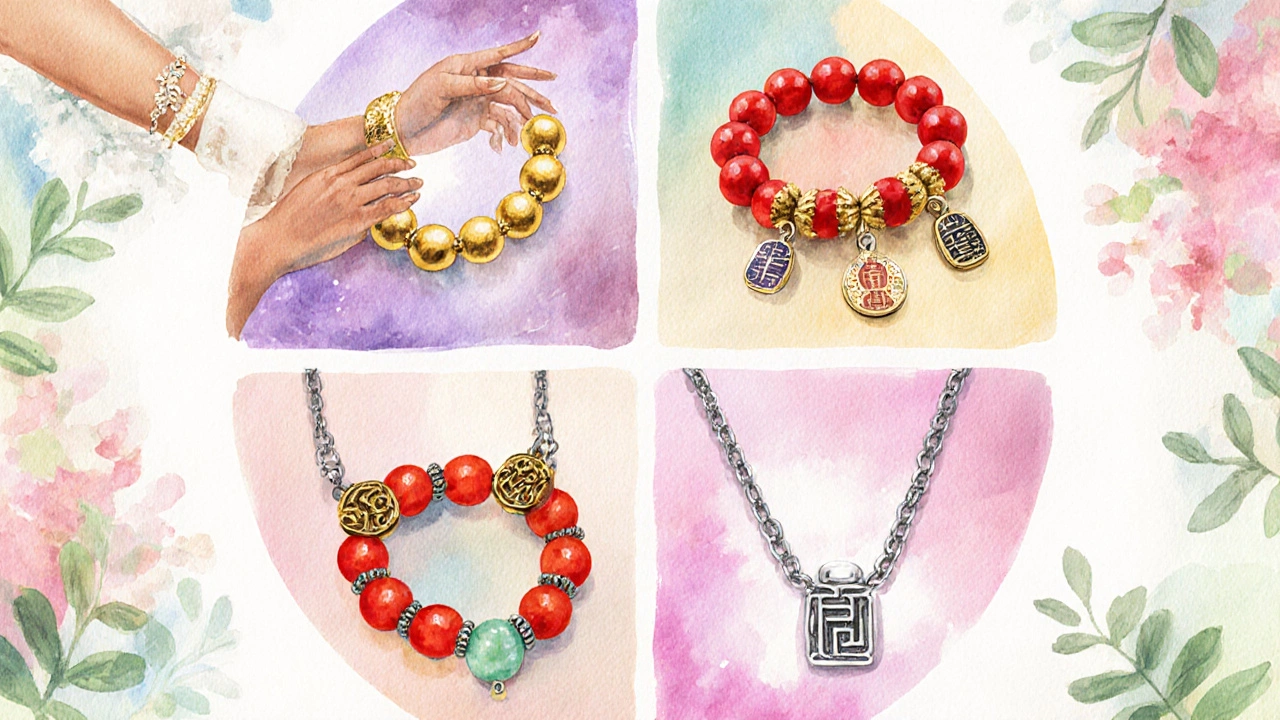
Traditional Indian Lucky Numbers and Their Meanings
India’s diverse cultures share a handful of numbers that repeatedly surface in jewelry, rituals, and festivals.
- 7 - Seven is the number of chakras, planetary influences, and the legendary Saptapadi (seven wedding vows). Seven‑bead bracelets are common for brides seeking marital harmony.
- 9 - Symbolises completeness (nine forms of the goddess Durga). Nine‑bead strands are often gifted during Navratri for protection.
- 11 - Represents the eleven Rudras, a fierce protective force. An 11‑bead mala of Rudraksha beads is popular among Shiva devotees for inner strength.
- 21 - Associated with the twenty‑one steps of a temple's sanctum. A 21‑bead bangle is believed to balance the three gunas (sattva, rajas, tamas) across seven days each.
- 33 - Mirrors the thirty‑three deities in the Vedic pantheon that bless the wearer with spiritual guidance.
- 51 - Used in manymala (prayer bead) strings for extended chanting; 51 represents the 51 letters in the Sanskrit alphabet.
- 108 - As mentioned, 108 is the ultimate count used in large malas, yoga meditations, and templeTemple jewelry that incorporates beads along with gold or silver settings.
When you spot these numbers on a piece, it’s usually a sign that the maker intended a specific auspicious purpose.
Cross‑Cultural Lucky Numbers for Beads
While Indian traditions dominate the Indian market, many shoppers love mixing influences. Below is a quick look at what other cultures consider lucky.
| Region | Lucky Count(s) | Typical Use |
|---|---|---|
| India | 7, 9, 11, 21, 33, 51, 108 | Bracelets, malas, wedding jewelry |
| China | 8, 88, 168 | Prosperity bracelets, pendants |
| Japan | 7, 8 | Omamori charms, prayer beads |
| Western (US/Europe) | 3, 5, 12 | Fashion necklaces, charm bracelets |
| Middle East | 13 (often avoided) - 7 is preferred | Amulets, hamsa beads |
Notice how the number 8 dominates in Chinese culture because the word for eight sounds like “wealth”. In contrast, 13 is usually skipped in many Western and Middle‑Eastern contexts due to superstition.
Choosing the Right Bead Count for Your Piece
Now that you know which numbers carry weight, let’s turn that knowledge into a practical decision.
Step 1 - Define the Purpose
- Prayer or mantra practice: Aim for counts that match mantra cycles - 108 for full cycles, 51 for longer chants, 21 for short meditations.
- Fashion statement: Pick numbers that look balanced visually. Odd numbers like 7 or 9 create asymmetry that feels dynamic, while even numbers like 8 or 12 give a neat, symmetrical look.
- Protection or wellbeing: Choose traditional protective numbers - 11 (Rudraksha), 7 (chakras), 8 (wealth).
Step 2 - Consider the Jewelry Type
- Bracelet: 7 or 9 beads work well for a slim bangle; 21 or 33 fit larger cuff styles.
- Mala or prayer necklace: 108 is the classic length; 51 and 21 are popular for shorter, travel‑friendly malas.
- Necklace pendant: Often a single bead or a cluster of 3‑5 beads; if you want luck, choose 3 (tri‑symbolic) or 5 (five elements).
Step 3 - Pick the Material
Material can reinforce the numeric meaning. Rudraksha beads are traditionally used with the number 11 because the lore links the bead to the eleven Rudras. Glass beads are neutral and work for any count, while semi‑precious stones like garnet (for passion) or citrine (for wealth) can be paired with 8 or 9 for added symbolism.
Step 4 - Size and Comfort
Count isn’t the only factor - bead diameter matters. A 108‑bead mala with 2mm beads feels lightweight, while the same count with 6mm beads becomes bulky. For daily wear, keep the total length under 30cm for necklaces and under 20cm for bracelets.
Step 5 - Verify Cultural Fit
If you’re gifting a piece to someone from a specific culture, double‑check that the number isn’t considered unlucky there. For example, avoid 4 in Chinese contexts (sounds like “death”) unless you’re intentionally subverting tradition.
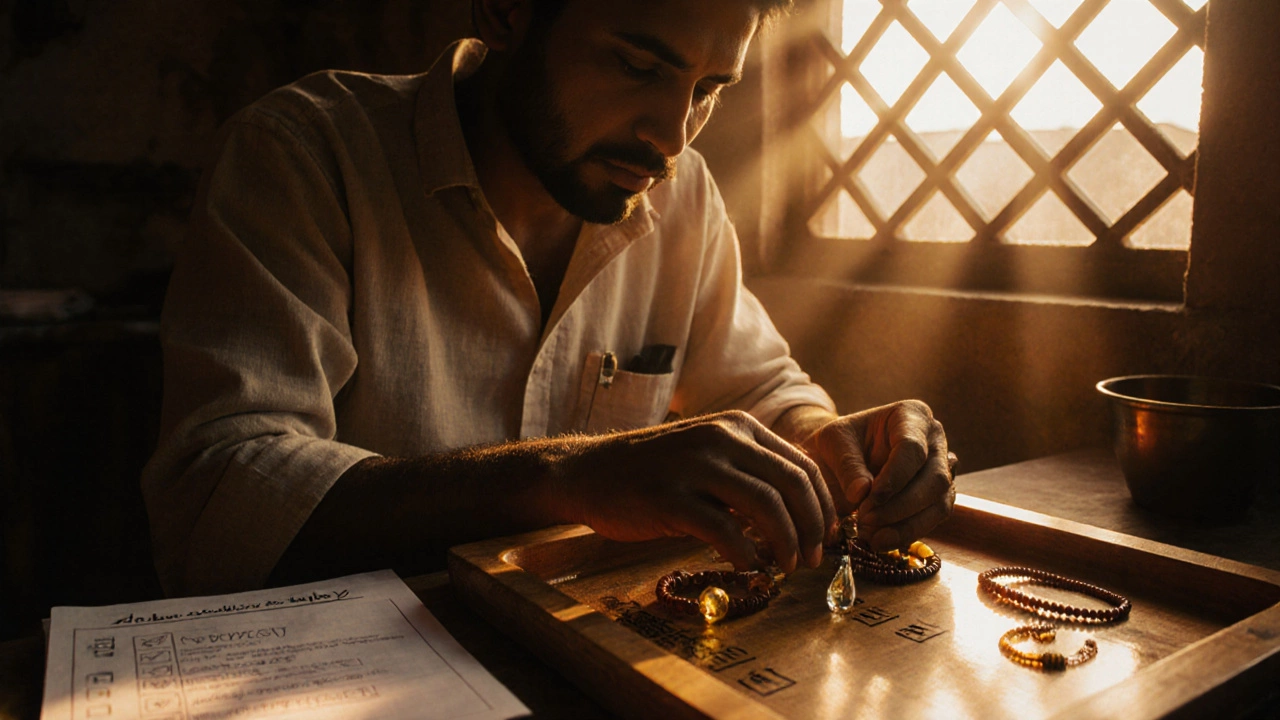
Common Myths and Pitfalls
Even well‑meaning shoppers fall into traps. Here are the most frequent ones and how to sidestep them.
- Myth: More beads = more luck. Luck isn’t a quantity; it’s about the right number for the right purpose. A 108‑bead necklace for casual fashion can feel over‑done.
- Myth: Any bead material works with any count. Some numbers are tied to specific stones (e.g., 7 with sapphire for wisdom). Ignoring that reduces symbolic impact.
- Pitfall: Ignoring wrist size. An 33‑bead bangle may not close comfortably on a smaller wrist, leading to constant adjustment and loss of positive energy.
- Pitfall: Buying cheap replicas. Low‑quality glass beads can chip, breaking the symbolic chain. Invest in genuine semi‑precious or sacred beads for durability.
Practical Checklist Before You Buy or Create
- Identify the cultural tradition you want to honor.
- Choose a number that matches the purpose (prayer, protection, fashion).
- Select material that reinforces the meaning (Rudraksha for 11, citrine for 8, etc.).
- Measure the intended wearer’s wrist/neck length.
- Confirm the count isn’t unlucky in the wearer’s culture.
- Inspect bead quality - no cracks, uniform size.
- Consider a clasp or knot that also respects symbolism (e.g., a GuruLok knot for 108).
- Seal the piece with intention - many artisans recommend a short mantra while stringing the beads.
Follow these steps and you’ll have a piece that looks good, feels right, and carries genuine positive vibes.
Frequently Asked Questions
Why is 108 considered the most powerful bead count?
108 aligns with several ancient concepts: there are 108 energy lines (nadis) that converge at the heart, 108 Hindu deities, and 108 Upanishadic verses. Repeating a mantra 108 times is believed to complete a full cosmic cycle, making the count especially potent for meditation and prayer beads.
Can I mix different lucky numbers in one piece?
Mixing is fine as long as the overall count still reflects a meaningful number. For example, a 33‑bead bracelet that includes a 7‑bead focal cluster still honors both 33 (the divine pantheon) and 7 (chakras). Just keep the intention clear.
Is 13 ever used as a lucky count?
In most cultures 13 is avoided due to superstition. However, some contemporary designers deliberately use 13 to challenge norms or appeal to customers who want to “flip the script.” If you choose 13, do it with full awareness of the cultural baggage.
What size beads work best for a daily‑wear mala?
For daily wear, 2mm to 4mm beads strike a balance between comfort and durability. They keep the total length manageable (around 108cm for a 108‑bead mala) and won’t snag on clothing.
Do I need a special clasp for lucky bead jewelry?
A clasp that reflects the same symbolism strengthens the piece. For example, a knot called the GuruLok (often used on 108‑bead malas) symbolizes the Guru’s guidance, while a simple magnetic clasp works for fashion pieces where the number alone carries the intent.
